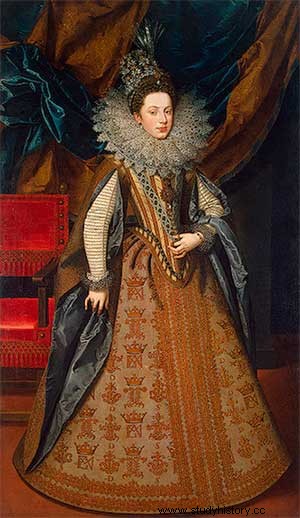The crisis of 1640 is known as a series of peninsular conflicts and others of an extra-peninsular nature. Among the internal conflicts, caused by the tensions between the Crown and the kingdoms and by a marked fiscal pressure, the following should be noted:Vizcaya riots against the levy of soldiers and the salt tobacconist (1630-1631); the Catalan rebellion (1640-1652); the rebellion of Portugal and its subsequent separation (1640-1668); the Andalusian conspiracy (1641), led by the Marquis of Ayamonte with the aim of crowning the Duke of Medina-Sidonia; the conspiracy of Miguel de Itúbide in Navarra (1646); and the supposed conspiracy promoted in Aragon by the Duke of Híjar (1648).
Conflictosextrapeninsulares
Extra-peninsular conflicts, in addition to the one that occurs in the Netherlands, appear due to misery, hunger or fiscal pressure, as happens with those of Palermo, Salemo, Pulla, Calabria and Naples, all of them between 1646 and 1648 because of of the new taxes. The two most important rebellions due to their duration and their geostrategic location were:the Catalan rebellion and the
Portuguese revolt. At the heart of both beats a question of respect for authority.

Crisis in Catalonia
After the outbreak of war with France in 1635, in 1637 the Count-duke tried to force the participation of Catalan troops in the Leucata campaign . Since then there will be various incidents and the less and less harmony between Madrid and Barcelona. The fiscal pressure, the lodging of soldiers and the institutional obstacles of the Principality increased the tensions that would explode on the day of Corpus Christi (Corpus de Sangre, June 7), which ended with the death of the viceroy, the Marquis of Santa Coloma. The Diputación and the Municipal Council took over the government of Catalonia and the city. In the established assembly or Board of Arms, the canon of La Seo d'Urgel, Pau Claris, deputy for the ecclesiastical arm who would appeal to the support of France, is at the head. With the invasion of Catalonia (July 31, 1640) by the Count Duke, after the peaceful appeals failed, the conflict spread to the entire Principality (Guerra deis Segadors , 1640-1652).
In Catalonia, a French administration was established from the viceroys appointed from Paris . The open war fronts, without solution, made Felipe IV take the decision to separate Olivares from the support and take the reins of power by himself from 1642. Catalonia will return to the Spanish monarchy in 1652 after the taking of Barcelona by part of Don Juan José of Austria.
Crisis in Portugal

To understand the Portuguese revolt we must go back a little further in time. If with the coming to power of Olivares, with Felipe IV, there was a strengthening of the centralist policy, the kingdom of Portugal, incorporated into the Spanish Monarchy in 1580, had already shown its rejection of Olivares's centralist policy since the beginning of the 1630s. The Secession had its origins, fundamentally:in the divergence of Portuguese and Spanish interests, which were especially noticeable in the colonies; in the elevation of the contributory policy (expressed in the Union of Arms); and, also, in the lack of representation of Portugal in the politics of the Hispanic monarchy. On December 1, 1640 an insurrection broke out in Lisbon, as well as in the rest of the country . The Castilian guard was attacked, Vasconcelos killed and the viceroy, Margarita de Savoy led to the border. On January 28, 1641, the Duke of Braganza, supported by a nationalist clergy and a large part of the nobility, was proclaimed king , with the title of Juan IV, Portugal would reach agreements with France (1641), Holland (1641) and England (1642), which would support it in its long conflict with Spain until it achieved its independence (1668).
